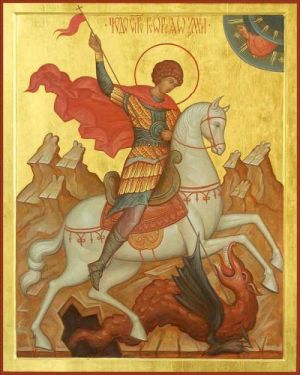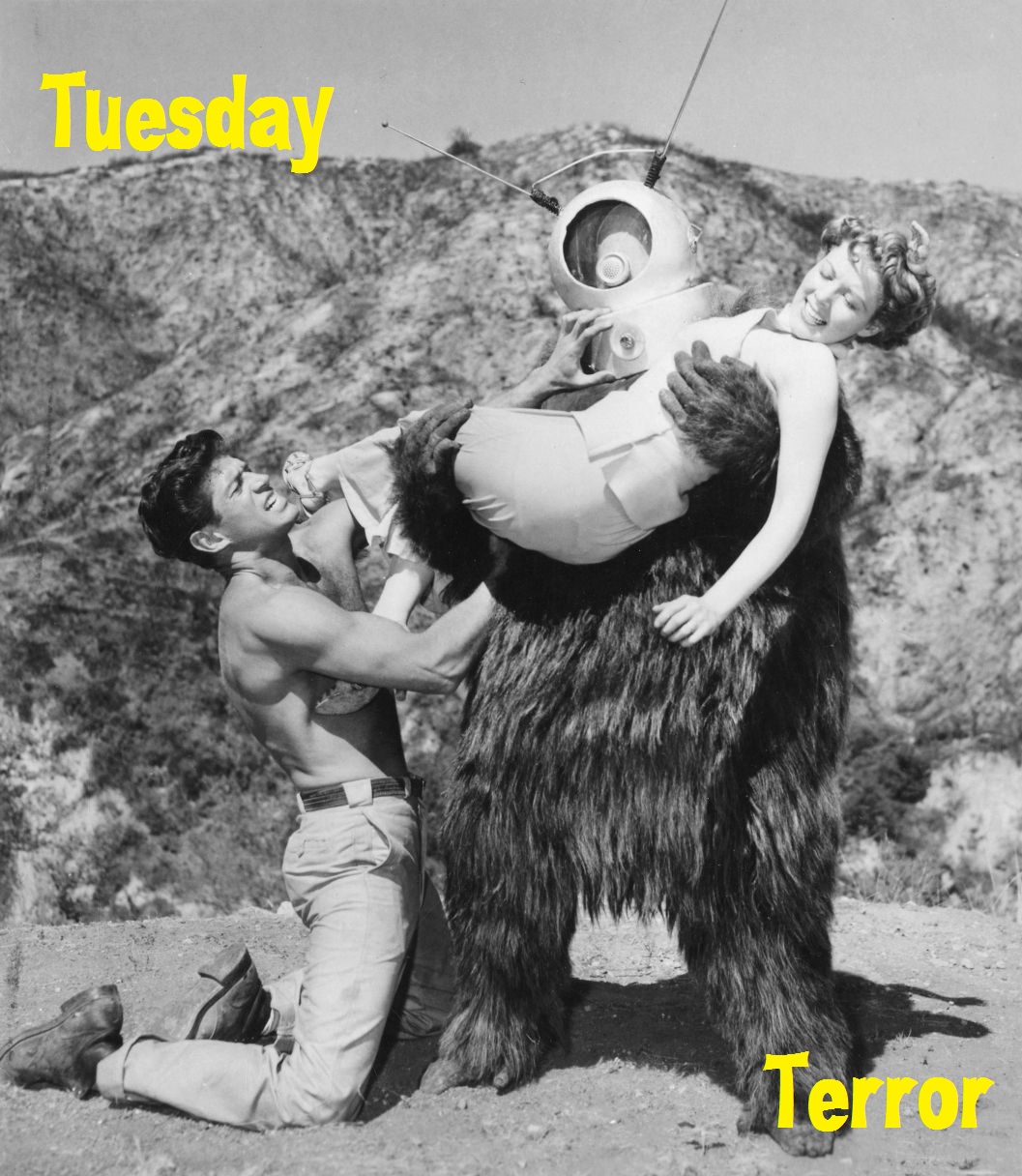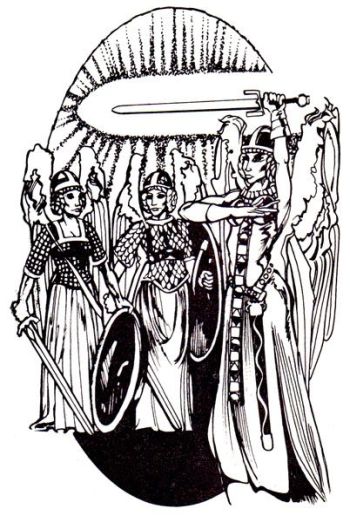Savage Wednesday: Star Frontiers Races
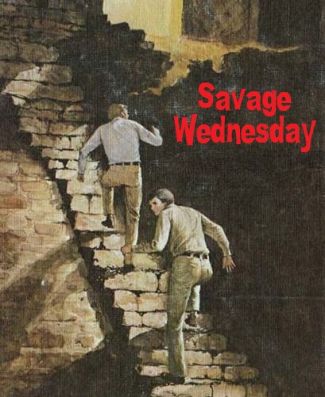
Today, I take a break from converting creatures found in the AD&D Monster Manual. Instead, I look within the pages of TSR’s Star Frontiers. (N.B. Those are affiliate links.) I’ve drawn inspiration from Star Frontiers once before, retooling the rasties for use with 5E D&D. You can check that post out here. As usual for Savage Wednesday, I’m using Savage Worlds Deluxe Explorer’s Edition. (N.B. That’s an affiliate link also.)
Dralasite
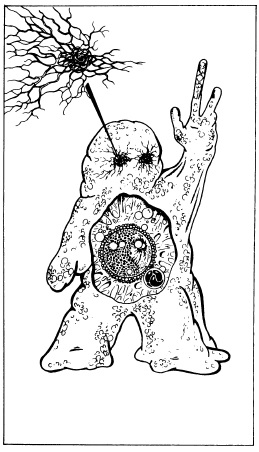
Dralasites are short, rubbery aliens that have no bones or hard body parts. Their skin is a flexible membrane that is very tough and scratchy. It is generally dull gray and lined with dark veins that meet at the Dralasite’s two eyespots.
The internal structure of a Dralasite is very different from the other races. The Dralasite’s central nerve bundle (brain), numerous small hearts and other organs float in a pudding-like mixture of protein and organic fluids. Dralasites breathe by absorbing oxygen directly through their skin, so they have no lungs. They are omnivores, but eat by surrounding their food and absorbing it, so they have also have no digestive tract or intestines.
All Dralasites go through male, female and neutral stages during their lives (these phases can be controlled with medicines). Males release spores into the air, which drift until they become attached to a female. A young Dralasite then “sprouts” from its mother, eventually maturing and dropping off.
Elasticity. A Dralasite’s skin is stretchable and supported by a complex muscle structure. A Dralasite can change the shape of its body, growing arms and legs to use for walking and handling tools or weapons. The Dralasite reabsorbs limbs when they aren’t needed. A Dralasite can have a number of limbs equal to 1 plus half Agility. Growing or absorbing a limb takes five minutes. Only one limb can be grown or absorbed at a time. A limb can be up to 1 yard long. Regardless of the number of limbs, a Dralasite with more than two arms is limited to one extra non-movement action that incurs no multi-action penalty.
Hard to Kill. A Dralasite’s lack of internal organs and bones lets a Dralasite ignore wound modifiers when forced to make a Vigor roll due to Incapacitation.
Keen Olfactory Senses. Since a Dralasite breathes directly through its skin, that entire membrane is an olfactory sensory organ. A Dralasite gets a +2 to Notice when using its sense of smell or taste.
Lie Detection. A Dralasite has an innate sensitivity to spoken falsehoods. A Dralasite gets a +2 to Notice when to see if other characters are lying.
Slower. A Dralasite has a Pace of 5.
Vrusk
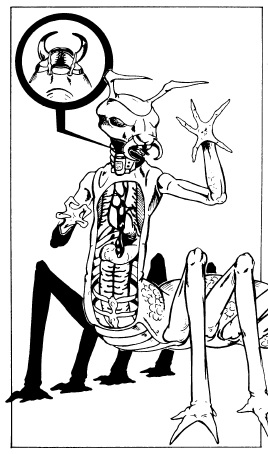
Vrusk look like large insects. Eight legs grow from their abdomen, four on each side. Their torso is upright in front of the abdomen. The torso is humanoid, with two arms connected at the shoulders. The head is above the shoulders. Vrusk hands are circular pads with five fingers spaced evenly around the edge. A Vrusk’s shoulders are double-jointed, so they can rotate their arms in a full circle without straining any muscles. They can reach any point on their abdomen or behind the backs easily.
A Vrusk’s body is covered by a carapace (hard shell). This shell is jointed at the Vrusk’s elbows, hips, knees, etc. The carapace protects the Vrusk from bruises, cuts, scratches and other minor injuries. Unlike insects, Vrusk have an internal skeleton to support their bodies. Young Vrusk have a blue carapace with bright orange near the joints. As the Vrusk gets older, its carapace changes to dull green with yellow joints.
Vrusk have large eyes that are protected by a hard, clear covering. The mouth is surrounded by four eating mandibles. The two larger mandibles hold food while the small ones tear it apart and place it in the mouth. They are omnivores. Vrusk have lungs, and breathe through many small nostrils under the abdomens. This arrangement makes it difficult from Vrusk to swim.
Ambidexterous. A Vrusk can use both hands equally well and does not suffer the normal -2 penalty when performing physical tasks with the off-hand.
Carapace. A Vrusk’s carapace provides +2 Armor. Armor-piercing weapons may negate this protection.
Comprehension. Vrusk society is a complicated maze of mercantile and family structures. A Vrusk is adept at navigating social situations. A Vrusk has a free d6 in Persuasion or Streetwise (player’s choice).
Scuttle Quickly. A Vrusk has a Pace of 10.
Trouble Swimming.. A Vrusk has a -2 penalty to Swimming rolls.
Yazirian
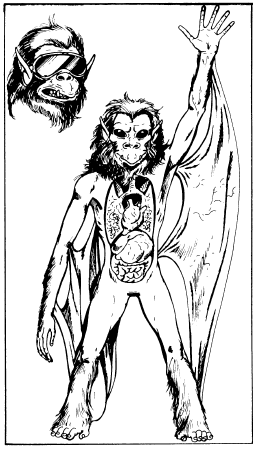
Yazirians are tall, thin humanoids. They have long arms and legs and slender torsos. Two large flaps of skin grow on either side of their bodies, attached along their arms, torso and legs. When a Yazirian raises its arms, this membrane is stretched tight and forms a sort of wing.
Yazirians have muzzles and high foreheads, giving them an animal-like appearance. Their heads are surrounded by manes and collars of hair, which varies in color from glossy black to pale yellow. Their skin color ranges from gray to light tan. Because their bodies do no sweat, Yazirians pant to keep cool. They are omnivores.
Yazirians have four knuckles (one more than Humans) on their fingers and toes. The inside toe is opposed like a thumb, allowing them to grasp things with their feet. The tips of their fingers and toes end in broad, ribbed pads, giving them excellent grip. These characteristics, combined with their animal-like appearance, earned them the nickname “monkeys.”
Agile. A Yazirian starts with a d6 in Agility.
Battle Rage. A Yazirian may become enraged in combat. This ability is equivalent to the Berserk Edge.
Excellent Climber. A Yazirian has a free d6 in Climbing.
Gliding. Yazirians can glide short distances using the membranes along their sides. To do so, a Yazirian must start at least 5″ (10 yards) above the ground. A Yazirian glides up to 1″ (2 yards) for every inch of altitude at the start the start of the glide. Glide speed equals Pace.
Low-Light Vision. Yazirians are nocturnal. A Yazirian can see in all but pitch black conditions and ignores penalties for Dim and Dark lighting. A Yazirians eyes are sensitive to light. Without protective goggles, a Yazirian has a -2 penalty to attack rolls and cannot see targets farther away than 10″ when lighting is not Dim or Dark.
